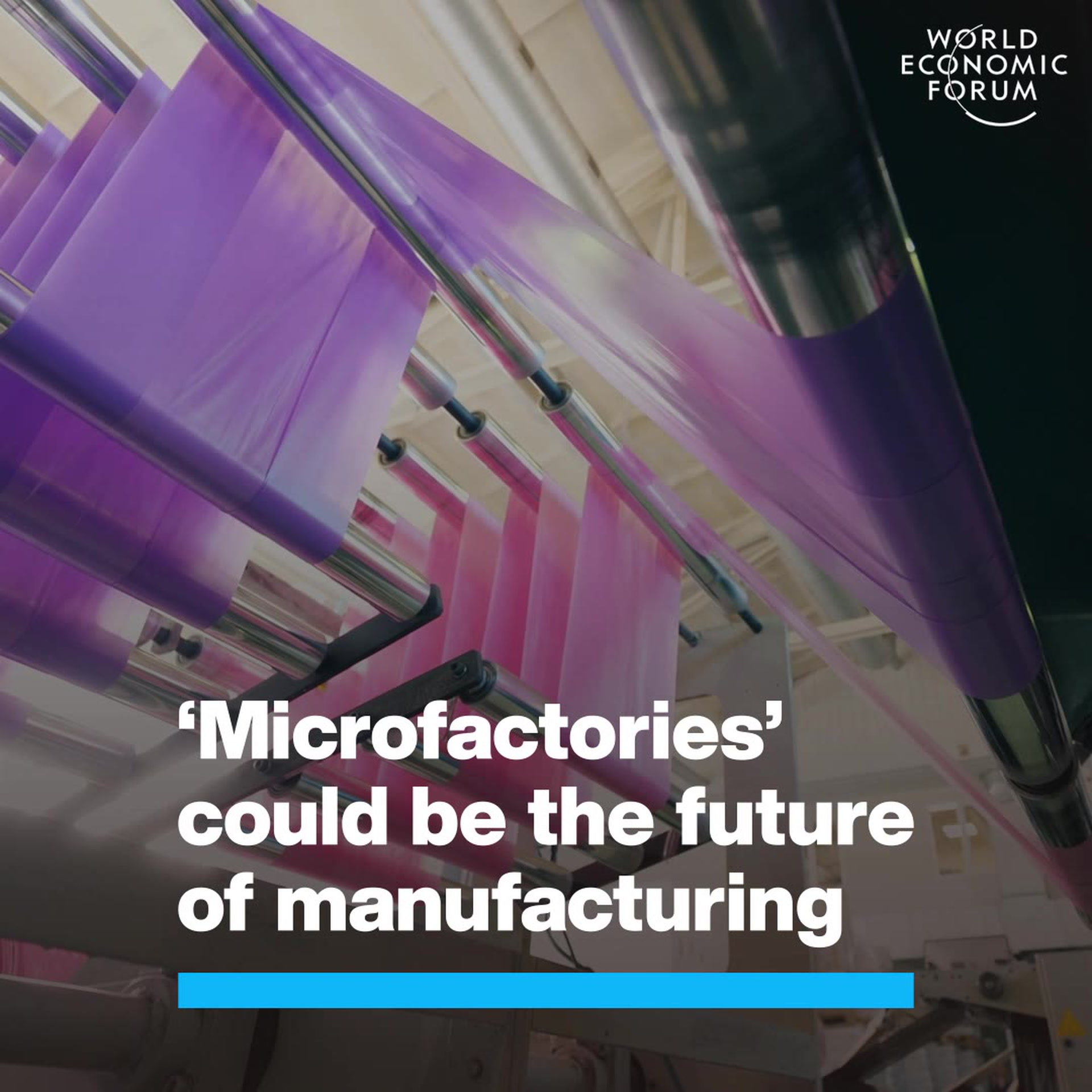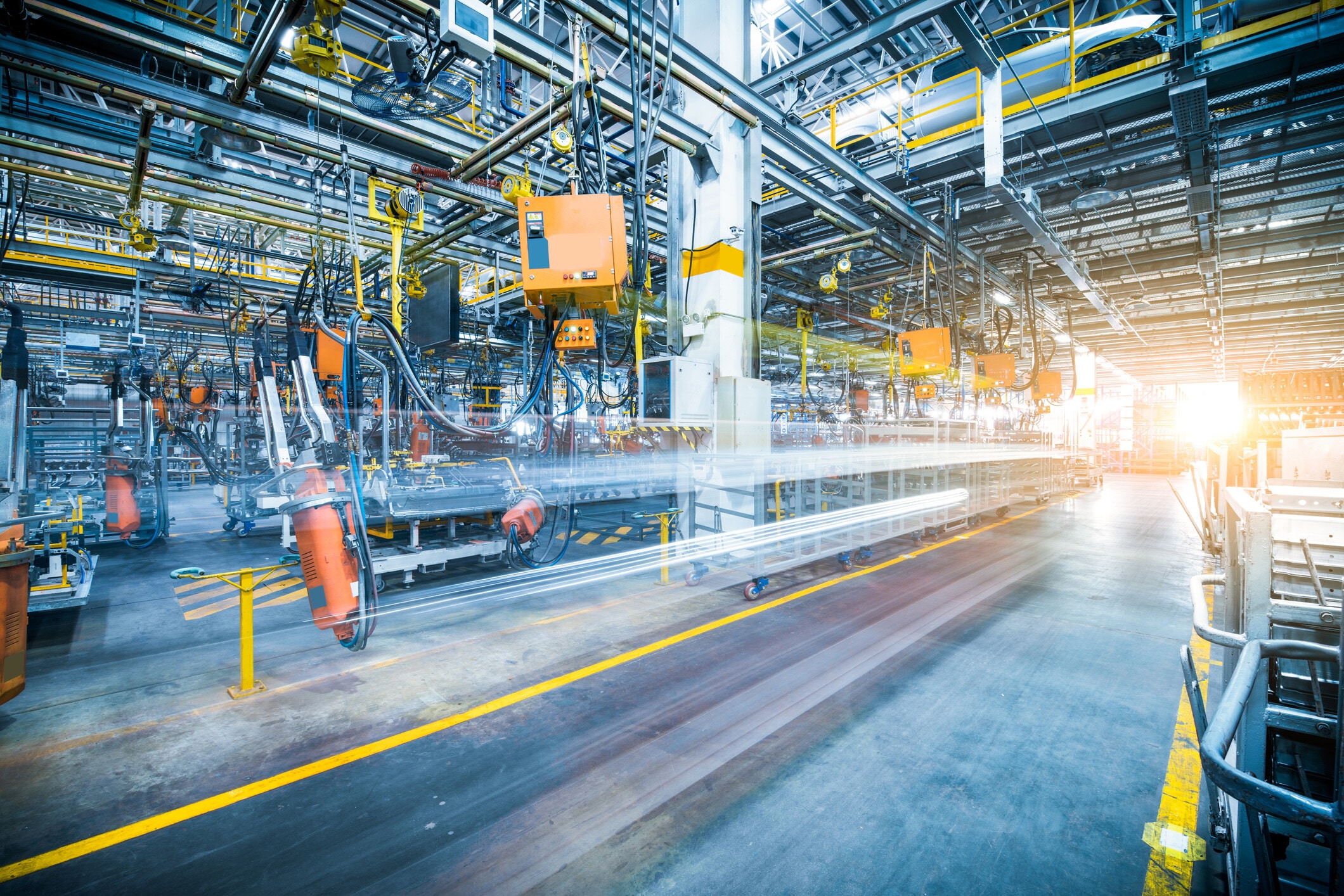This is the key to manufacturing in a post-pandemic world

Image: Lenny Kuhne/Unsplash
Memia Fendri
Regional Manufacturing Lead, Centre for Advanced Manufacturing and Supply Chains, World Economic Forum
Get involved with our crowdsourced digital platform to deliver impact at scale
Stay up to date:
Advanced Manufacturing
- COVID-19 has increased the urgency to reduce costs and increase supply chain transparency in the manufacturing industry.
- The key to sustainable recovery is unlocking the benefits of data analytics in manufacturing
- Companies must collaborate on data for three main goals: productivity increase, improved customer experience and societal and environmental impact.
The COVID-19 pandemic has raised awareness of manufacturing’s crucial societal and economic roles, particularly with respect to the supply of medical equipment, pharmaceuticals and other essential goods. At the same time, it has caused an unprecedented financial hit to the industry, making cost reduction and the creation of transparent, flexible supply chains urgent priorities.
Now, more than ever, manufacturing companies need to work together to apply data and analytics in their operations to unlock value and achieve sustainable growth.
Here are three main ways collaboration around data and analytics can benefit manufacturing.
Productivity increase
Across the entire factory and supply chain, global leaders in manufacturing are already using analytics to increase asset productivity (for instance increased uptime through predictive maintenance), labour efficiency (such as through the automation of planning activities) and optimize net working capital (by reducing inventory levels, for example).
Companies are pursuing opportunities to increase asset productivity. For example, TOSHIBA works with a world-class water treatment equipment company to increase its performance and reliability. Based on sensor data provided by the plant operator, they optimize scheduling and input of key chemicals. This allowed the operator to not only reduce costs but also improve their environmental footprint.
As another example, the Swiss company Akselos collaborates with Royal Dutch Shell to reduce the risks relating to floating production storage and offloading units (FPSO) and increase their lifetime. Akselos’ algorithms combine design data with operational data to create a digital twin of the FPSO. The physics-based digital twin simulates in real-time how external events affect part and system fatigue, enabling drastic reductions in maintenance costs.
Companies are also seizing supply chain opportunities. Autosphere, a large community of automotive OEMs and suppliers, has come together to provide global visibility of assets along the supply chain. Using a common set of processes and transactions, supply chain actors share data to enable real-time accurate tracking of inventory and other assets through a platform provided by Surgere. This visibility enables a significant productivity enhancement but also enables higher resilience by identifying weaknesses in the supply chain.
As another example, a global leader in the wine and spirits industry partnered with EVRYTHNG to track and trace supply chain data throughout its bottle manufacturing and distribution process. Through the use of real-time data and advanced predictive algorithms, the wine and spirits leader now has supply chain visibility to support stringent quality requirements and commercial excellence expectations. The product cloud captures real-time data across the supply chain and facilitates immediate access whenever needed -- detecting and preventing defects before a bottle ever goes to market.
Customer experience
Manufacturers also use data-and-analytics collaborations to improve the customer experience, such as by offering more customized products and allowing them to verify the provenance of goods.
One opportunity is personalized cancer treatments. For example, Johnson & Johnson works with an extensive ecosystem of healthcare providers, suppliers and laboratories to improve outcomes for cancer patients. All ecosystem actors exchange patient data to personalize the treatment of specific cancers. The seamless end-to-end data flow across all players enables treatment using the patient's own cells.
Product authentication is another example. Ralph Lauren Corporation (RLC) partnered with EVRYTHNG to connect its full product portfolio to the web — assigning each product item a unique Digital Product ID. RLC's manufacturing partners tag each apparel item in the factory so it can be tracked from production to point-of-sale and beyond. Real-time visibility creates better control of supply chain integrity, provides the data intelligence needed to operate with more efficiency and agility, and provides consumers with the ability to authenticate the products they purchase as well as directly engage with RLC.
Societal and environmental impact
Collaborations around data and analytics benefit society as a whole, especially with respect to sustainability. Whenever companies and governments collaborate to address such issues, they rely on a common data ecosystem.
For example, Volvo Cars works with its battery suppliers to verify the ethical sourcing of cobalt for its electric car batteries. Using a blockchain solution developed by Circulor, Volvo is able to trace cobalt throughout the entire supply chain. Circulor and Volvo are now planning to extend the platform’s use to other materials and characteristics, such as the automaker’s CO2 footprint.
Similarly, Austral Fisheries uses OpenSC, an IoT and blockchain platform launched by the conservation organization WWF in partnership with BCG Digital Ventures, to trace fish throughout its entire supply chain network. This allows the company to verify the provenance of fish from “bait to plate.” The company’s fish are thus transformed from a commodity to a branded, traceable, and premium product.
A joint effort
A single manufacturer typically cannot fully capture these benefits on its own. Companies need a complete, end-to-end data set—such as covering the entire supply chain or providing visibility of an entire process. They also need a large enough data set to drive valid insights—for example, to establish statistically significant correlations for the training of artificial intelligence.
As a consequence, data from external partners often plays a critical role. This makes it essential for manufacturers to build an ecosystem in which companies can collaborate to exchange data. Participants need a common data ecosystem that provides a single source of truth for promoting mutual understanding and collaboration.
The World Economic Forum curates a unique multi-stakeholder community of world-leading manufacturers, technology providers, academics and many others. We are working on a community-developed framework that lays out key prerequisites and highlights how successful companies have overcome the barriers. For more information, join our project community.
Together, manufacturers can mutually benefit from each other’s experiences, shape the advanced analytics agenda and create a sustainable recovery.
Don't miss any update on this topic
Create a free account and access your personalized content collection with our latest publications and analyses.
License and Republishing
World Economic Forum articles may be republished in accordance with the Creative Commons Attribution-NonCommercial-NoDerivatives 4.0 International Public License, and in accordance with our Terms of Use.
The views expressed in this article are those of the author alone and not the World Economic Forum.
Related topics:
The Agenda Weekly
A weekly update of the most important issues driving the global agenda
You can unsubscribe at any time using the link in our emails. For more details, review our privacy policy.
More on Advanced ManufacturingSee all
Stephanie Wright, Memia Fendri and Kyle Winters
February 13, 2024
Maya Ben Dror and Lena McKnight
January 31, 2024
Dr. Matthew Putman
January 17, 2024
Kyriakos Triantafyllidis and Andreas Hauser
January 16, 2024







